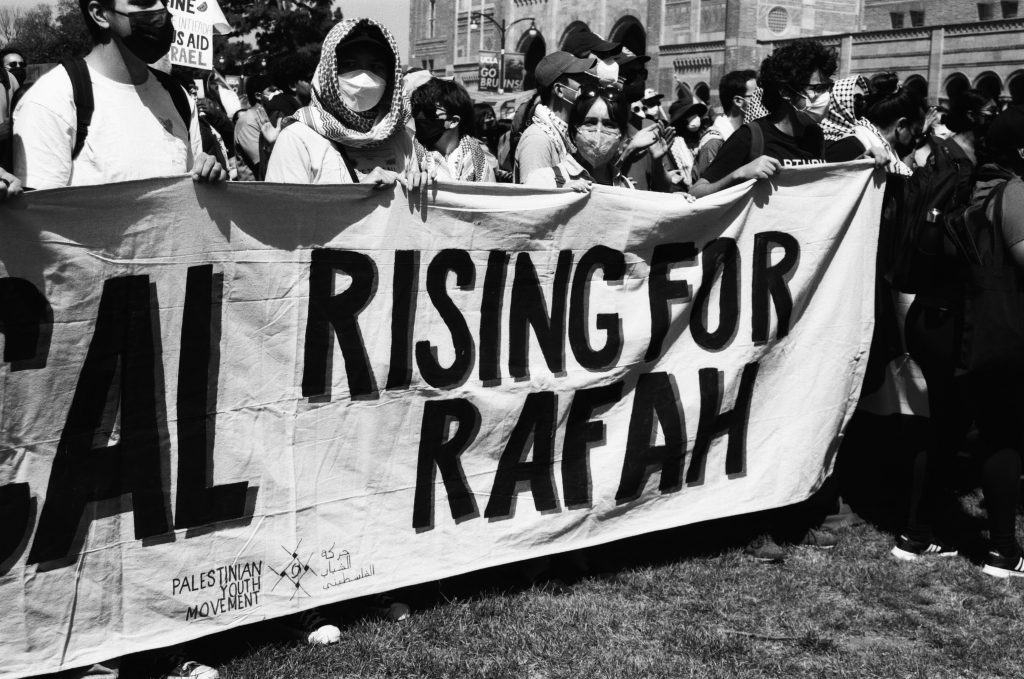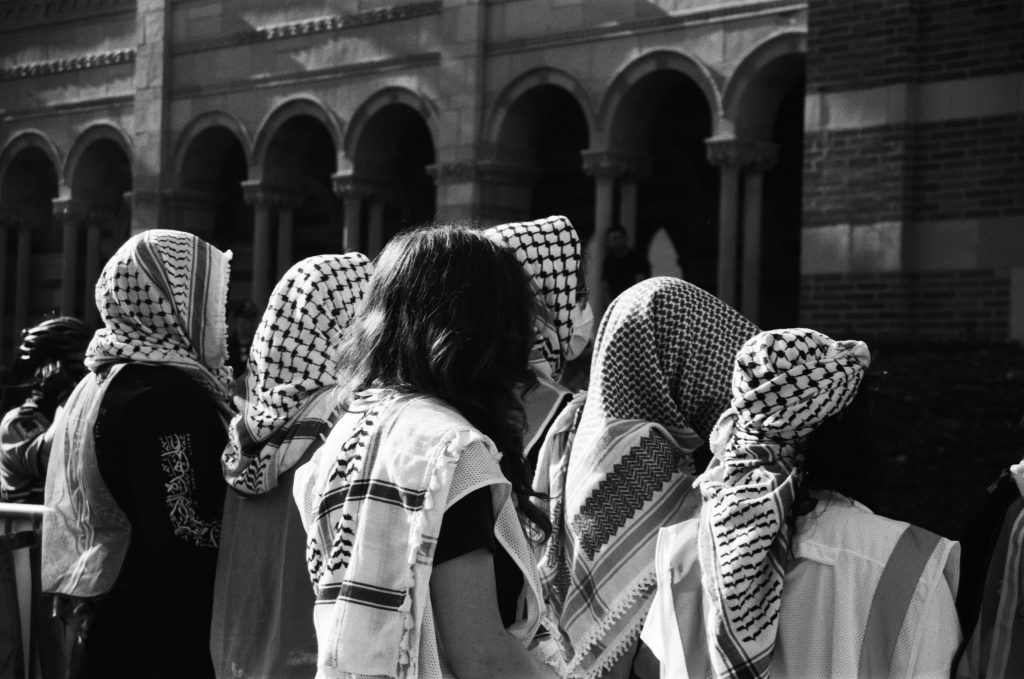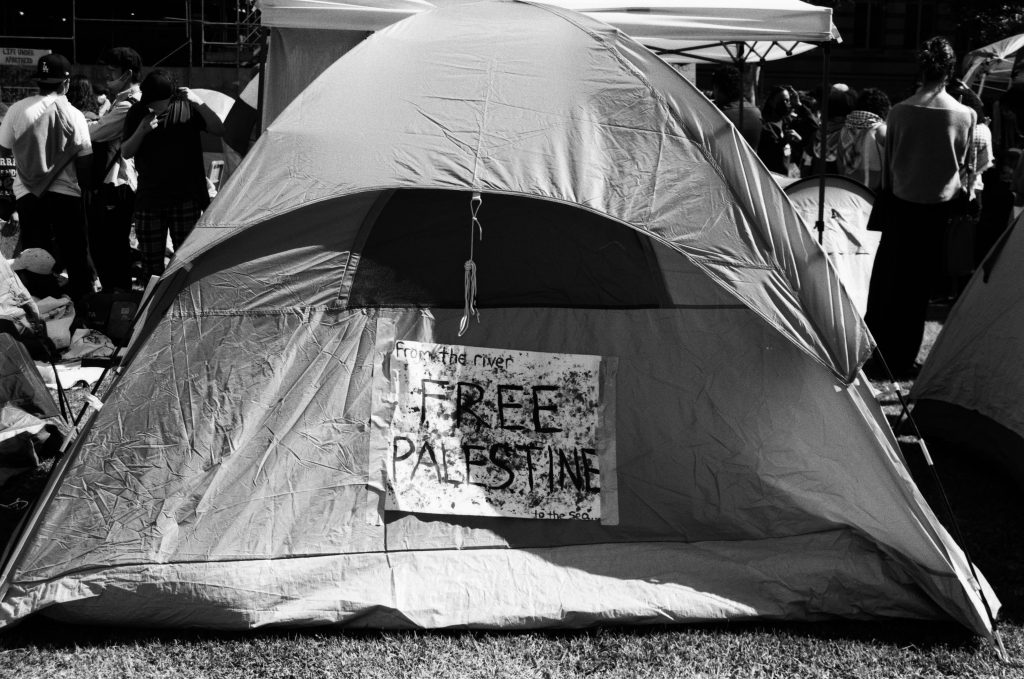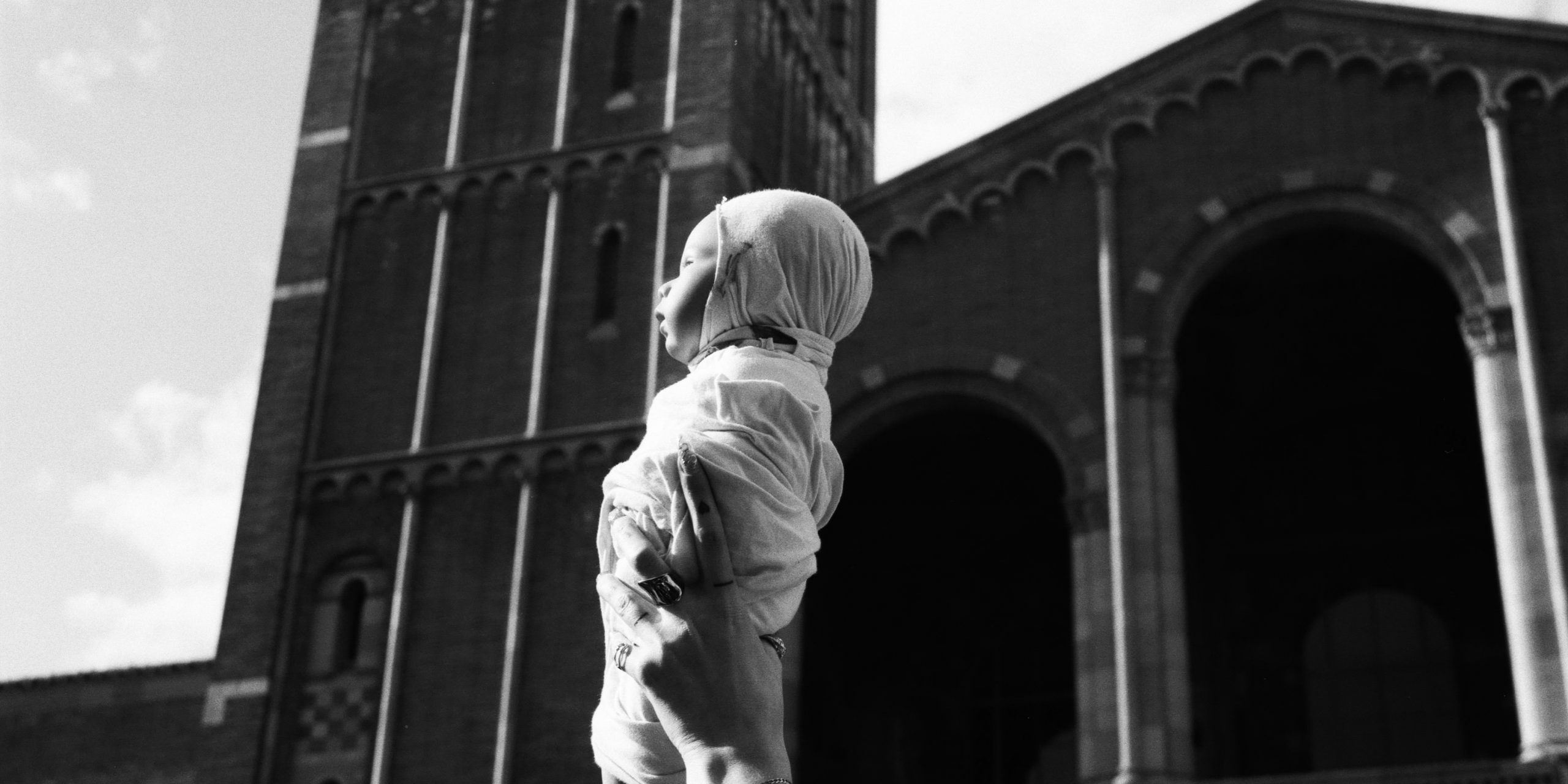Written and Photographed by Palmer Dean
It was clear after the counter-protest of April 30th that UCLA’s student protestors would have to prepare for another attack. Their camp, a self-sufficient place created spontaneously, needed to reorganize. So while they kept teaching history lessons, holding religious ceremonies, and playing music, they also refilled their supplies—clothes, blankets, water—thanks to late night and early morning donations. They washed their faces in lecture hall bathrooms and got ready.

When I got there, a group of girls were eating delicious smelling chicken and asked me to join them. Nearby, at the “People’s Library,” a table stocked with piles of books, written from many perspectives (Naipaul to Atwood and many more), were free to all. At the popular assembly that afternoon we talked about arrest preparation. We learned how to use self-defense.
The sit-in outside the encampment began on May 1st around 5 pm at Wilson Plaza, the crucible of our university. As I stood in the crowd I saw and interacted with mostly students of color, disabled students, and Jewish students. Those already at risk, those who were in great danger from police and violent counter-protesters, were risking more. Meanwhile, others took advantage of our canceled school day to go to the beach or to get a latte. Not everyone showed up. Some never do. But those of us who did came away changed.
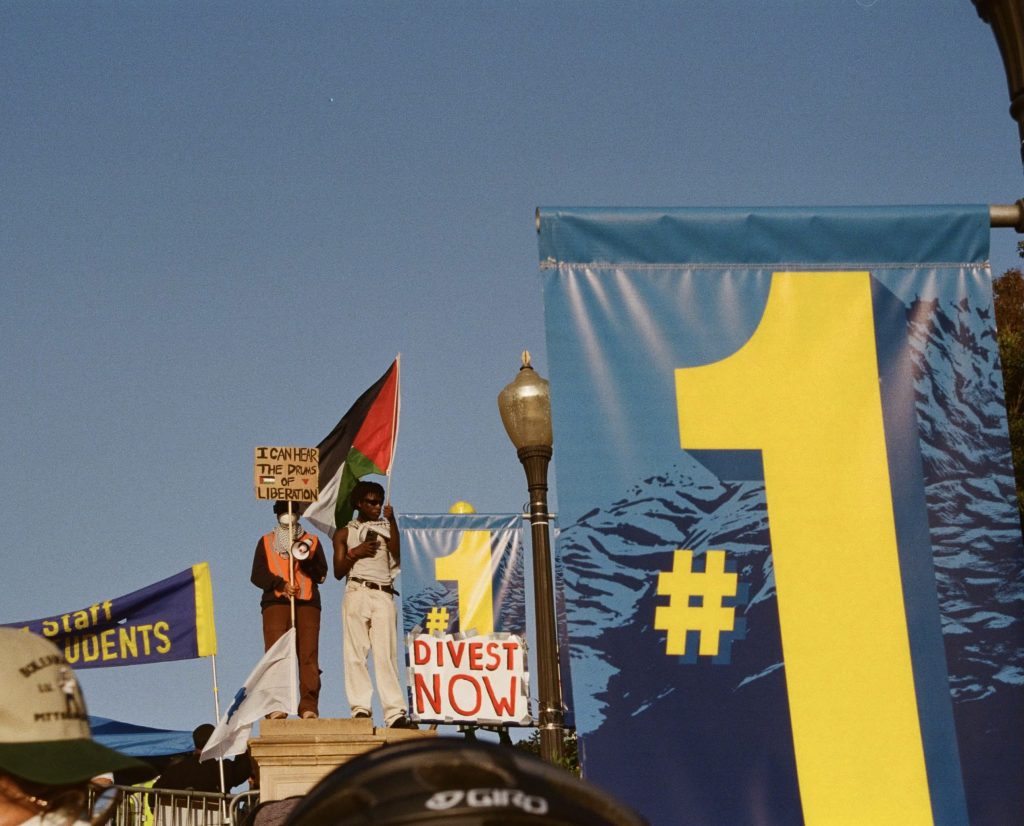
By 3 am, we were low on bodies. Most of the protestors had moved to a different part of campus to mobilize and plan their next moves. There were maybe 100 of us sitting, drumming softly, sometimes chanting. That’s when we were accused of being unlawful protestors, and a dispersal order was sent out. Prison buses drove in, and police burst out the doors of the lecture halls unsheathing their batons. Then came the flash bangs, thrown at us by the SWAT team, after which they tried to arrest us. We did not know, and we were not told, for what.
Here’s what we did at 4 am: We ran for our lives when we heard the flares, the pings of rubber bullets, and the chaos. We grabbed our friends and sprinted. Screaming. Frantically dialing friends to check on them. I then asked myself: Why is my best friend inside that camp, peacefully protesting, in full body armor? He wasn’t detained. At least 200 others were. More were shot at. More were dragged. You expect there to be risk in standing up for your beliefs. You don’t expect to be hit by an officer’s rubber bullet.

The thing that sticks with me is the juxtaposition: all that ugliness against so much beauty. I’m telling you, the protestors were not an angry mob of teens. There was beauty in the drum circles in and outside the camp that led us through hours of chanting. There was beauty in all those books, and in the mental health clinic on site. There was beauty in the Anawakalmekak, Los Angeles County’s only Indigenous K-12 school, who lent their voices and called for freedom of speech for the students of UCLA. Beauty in locking arms to create a wall outside the camp and beauty inside it.
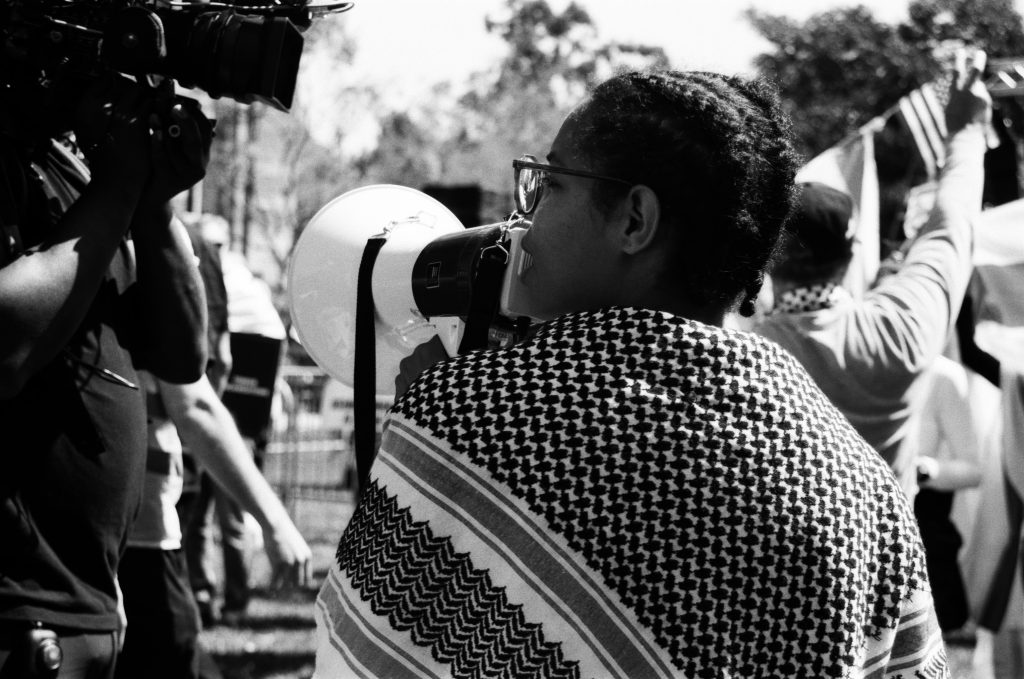
The fight is not over. Currently, I am praying for Palestine’s safety and peace. I’ve seen how, together, we can create good things. I want us to do more of it. I want us not to despair—as many of us have felt like doing the last few days, seeing how the adults around us are behaving. In his book Disturbing The Peace (not yet in the People’s Library—I think I’ll bring a copy), Vaclav Havel wrote: “The more unpromising the situation in which we demonstrate hope, the deeper that hope is.”
I’m so angry about what’s happening in the Middle East and the negligent example we are being shown by our elders. I’m so sad about the spineless response from the administration, and the state of free speech in our country. As much as the media tries to distort who and what this movement is really about, we must refocus our attention on the people of Palestine. They are the people who deserve to hope, and to see that hope turn into justice.
